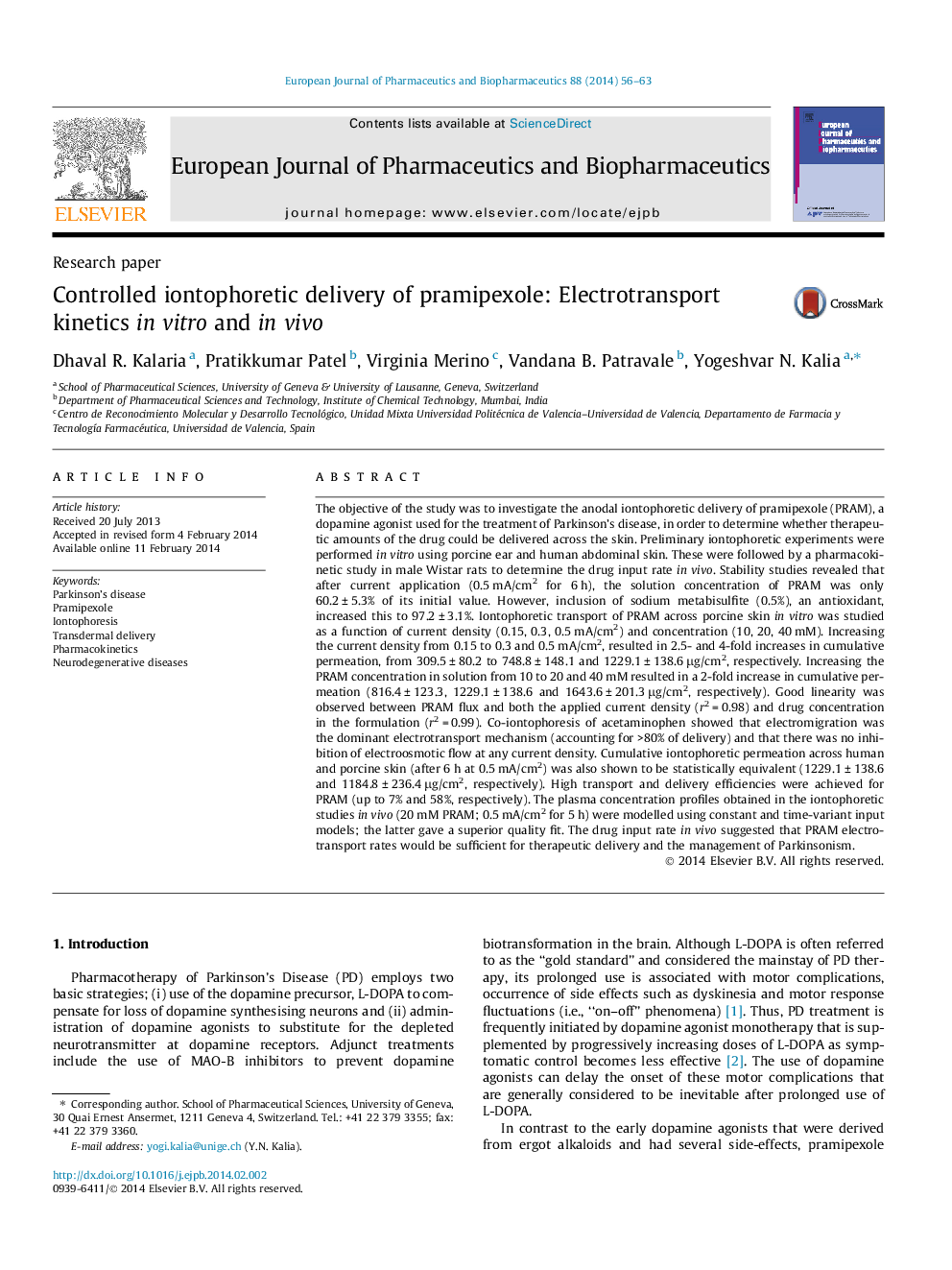| کد مقاله | کد نشریه | سال انتشار | مقاله انگلیسی | نسخه تمام متن |
|---|---|---|---|---|
| 2083584 | 1545339 | 2014 | 8 صفحه PDF | دانلود رایگان |

The objective of the study was to investigate the anodal iontophoretic delivery of pramipexole (PRAM), a dopamine agonist used for the treatment of Parkinson’s disease, in order to determine whether therapeutic amounts of the drug could be delivered across the skin. Preliminary iontophoretic experiments were performed in vitro using porcine ear and human abdominal skin. These were followed by a pharmacokinetic study in male Wistar rats to determine the drug input rate in vivo. Stability studies revealed that after current application (0.5 mA/cm2 for 6 h), the solution concentration of PRAM was only 60.2 ± 5.3% of its initial value. However, inclusion of sodium metabisulfite (0.5%), an antioxidant, increased this to 97.2 ± 3.1%. Iontophoretic transport of PRAM across porcine skin in vitro was studied as a function of current density (0.15, 0.3, 0.5 mA/cm2) and concentration (10, 20, 40 mM). Increasing the current density from 0.15 to 0.3 and 0.5 mA/cm2, resulted in 2.5- and 4-fold increases in cumulative permeation, from 309.5 ± 80.2 to 748.8 ± 148.1 and 1229.1 ± 138.6 μg/cm2, respectively. Increasing the PRAM concentration in solution from 10 to 20 and 40 mM resulted in a 2-fold increase in cumulative permeation (816.4 ± 123.3, 1229.1 ± 138.6 and 1643.6 ± 201.3 μg/cm2, respectively). Good linearity was observed between PRAM flux and both the applied current density (r2 = 0.98) and drug concentration in the formulation (r2 = 0.99). Co-iontophoresis of acetaminophen showed that electromigration was the dominant electrotransport mechanism (accounting for >80% of delivery) and that there was no inhibition of electroosmotic flow at any current density. Cumulative iontophoretic permeation across human and porcine skin (after 6 h at 0.5 mA/cm2) was also shown to be statistically equivalent (1229.1 ± 138.6 and 1184.8 ± 236.4 μg/cm2, respectively). High transport and delivery efficiencies were achieved for PRAM (up to 7% and 58%, respectively). The plasma concentration profiles obtained in the iontophoretic studies in vivo (20 mM PRAM; 0.5 mA/cm2 for 5 h) were modelled using constant and time-variant input models; the latter gave a superior quality fit. The drug input rate in vivo suggested that PRAM electrotransport rates would be sufficient for therapeutic delivery and the management of Parkinsonism.
Figure optionsDownload high-quality image (73 K)Download as PowerPoint slide
Journal: European Journal of Pharmaceutics and Biopharmaceutics - Volume 88, Issue 1, September 2014, Pages 56–63